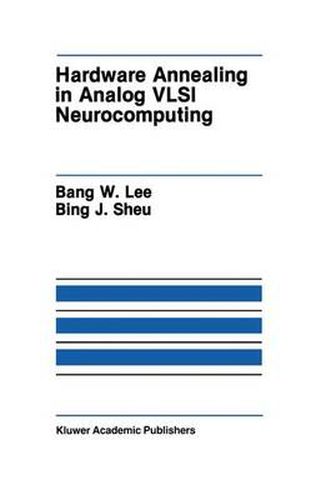Readings Newsletter
Become a Readings Member to make your shopping experience even easier.
Sign in or sign up for free!
You’re not far away from qualifying for FREE standard shipping within Australia
You’ve qualified for FREE standard shipping within Australia
The cart is loading…






This title is printed to order. This book may have been self-published. If so, we cannot guarantee the quality of the content. In the main most books will have gone through the editing process however some may not. We therefore suggest that you be aware of this before ordering this book. If in doubt check either the author or publisher’s details as we are unable to accept any returns unless they are faulty. Please contact us if you have any questions.
Rapid advances in neural sciences and VLSI design technologies have provided an excellent means to boost the computational capability and efficiency of data and signal processing tasks by several orders of magnitude. With massively parallel processing capabilities, artificial neural networks can be used to solve many engineering and scientific problems. Due to the optimized data communication structure for artificial intelligence applications, a neurocomputer is considered as the most promising sixth-generation computing machine. Typical applica tions of artificial neural networks include associative memory, pattern classification, early vision processing, speech recognition, image data compression, and intelligent robot control. VLSI neural circuits play an important role in exploring and exploiting the rich properties of artificial neural networks by using pro grammable synapses and gain-adjustable neurons. Basic building blocks of the analog VLSI neural networks consist of operational amplifiers as electronic neurons and synthesized resistors as electronic synapses. The synapse weight information can be stored in the dynamically refreshed capacitors for medium-term storage or in the floating-gate of an EEPROM cell for long-term storage. The feedback path in the amplifier can continuously change the output neuron operation from the unity-gain configuration to a high-gain configuration. The adjustability of the vol tage gain in the output neurons allows the implementation of hardware annealing in analog VLSI neural chips to find optimal solutions very efficiently. Both supervised learning and unsupervised learning can be implemented by using the programmable neural chips.
$9.00 standard shipping within Australia
FREE standard shipping within Australia for orders over $100.00
Express & International shipping calculated at checkout
This title is printed to order. This book may have been self-published. If so, we cannot guarantee the quality of the content. In the main most books will have gone through the editing process however some may not. We therefore suggest that you be aware of this before ordering this book. If in doubt check either the author or publisher’s details as we are unable to accept any returns unless they are faulty. Please contact us if you have any questions.
Rapid advances in neural sciences and VLSI design technologies have provided an excellent means to boost the computational capability and efficiency of data and signal processing tasks by several orders of magnitude. With massively parallel processing capabilities, artificial neural networks can be used to solve many engineering and scientific problems. Due to the optimized data communication structure for artificial intelligence applications, a neurocomputer is considered as the most promising sixth-generation computing machine. Typical applica tions of artificial neural networks include associative memory, pattern classification, early vision processing, speech recognition, image data compression, and intelligent robot control. VLSI neural circuits play an important role in exploring and exploiting the rich properties of artificial neural networks by using pro grammable synapses and gain-adjustable neurons. Basic building blocks of the analog VLSI neural networks consist of operational amplifiers as electronic neurons and synthesized resistors as electronic synapses. The synapse weight information can be stored in the dynamically refreshed capacitors for medium-term storage or in the floating-gate of an EEPROM cell for long-term storage. The feedback path in the amplifier can continuously change the output neuron operation from the unity-gain configuration to a high-gain configuration. The adjustability of the vol tage gain in the output neurons allows the implementation of hardware annealing in analog VLSI neural chips to find optimal solutions very efficiently. Both supervised learning and unsupervised learning can be implemented by using the programmable neural chips.